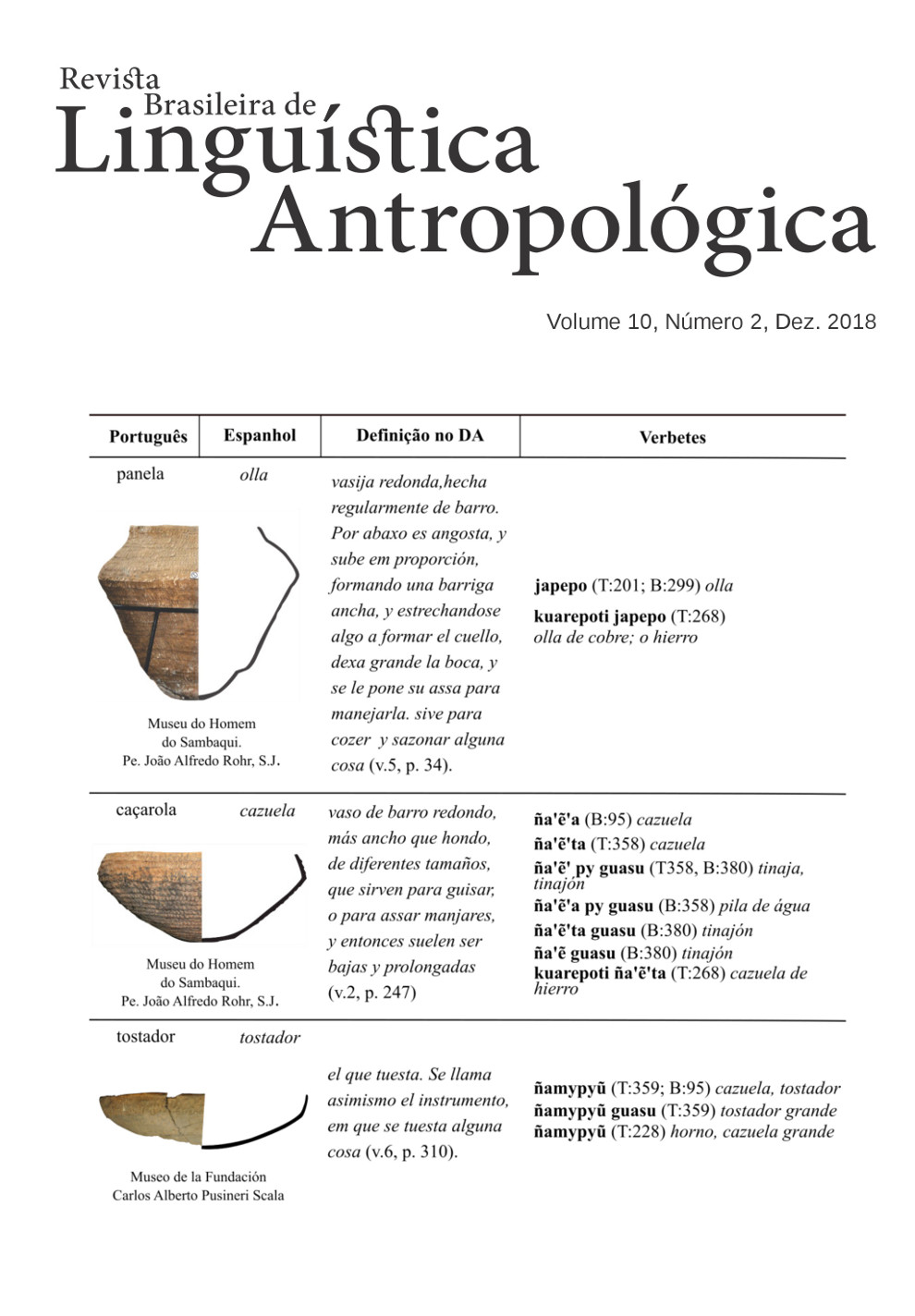Notes on the causative-comitative voice in Kaiowá and Guajajára
DOI:
https://doi.org/10.26512/rbla.v10i2.20982Keywords:
Guajajára. Kaiowá. Tupí-Guaraní. Voice. Causative-comitative. AlomorphyAbstract
The expression of the causative-comitative voice in Kaiowá and Guajajára is described. It is one of the five typical Tupi-Guarani voice expressions. The analysis of the causative-comitative voice in these two languages ”‹”‹was inspired by Rodrigues (1953), the linguist who described for the first time and properly the function of the cognate morpheme in a Tupi-Guaraní language, Tupinambá. In the present study, we have shown that the causative-comitative morpheme in Kaiowá and Guajajára has more allomorphs than the ones reported to date in the studies on these two languages. As described in Barbosa (2017), the causative-comitative morpheme in Kaiowá has 11 allomorphs: ero-, ro-, no-, era-, ra-, er-, r-, gwer-, gwero-, gwera-, gweno -; already the causative-comitative in Guajajára has 9 allomorphs: eru-, ru-, enu-, era-, ra-, er-, r-, wera-, weru-. The allomorphism of the Kaiowá and the Guajajára causative-comitative morpheme must be considered in the documentation and linguistic description that is aimed at strengthening the use of these languages.
References
Cardoso, V. Aspectos Morfossintáticos da Língua Kaiowá (Guarani). Tese de Doutorado. Campinas, SP: Unicamp. 2008.
Castro, Ricardo Campos. O epifenômeno da alternância de valência na língua Tenetehára (Tupí-Guaraní). Revista da ANPOLL, n. 34, p. 347-391, jan./jun. 2013.
Halle, Morris; Marantz, Alec. Distributed Morphology and the Pieces of Inflection. In:
Hale, Kenneth; Keyser, Samuel Jay. 1993. The View from Building 20. Cambridge: MIT Press, p. 111-176.
Harley, Heidi; Noyer, Rolf. Distributed morphology. Glot International, v. 4, n. 4, p. 3-9, 1999.
Harley, Heidi & Rolf Noyer. 1998. Mixed nominalizations, short verb movement, and object shift in English. Proceedings of NELS 28, edited by Pius N. Tamanji and Kiyomo
Kusumoto, 143-157. Amherst: GLSA, University of Massachusetts, Amherst.
Harrison, Carl; Harrison, Carole. 2013. Associação Internacional de Linguística SIL ”“ Brasil Anápolis ”“ GO.
Mejia, Blanca Flor Demenjour Munoz. 2017. Verbos em Kaiowá: uma descrição morfológica. Dissertação de Mestrado, Programa de Pós-Graduação em Letras, Universidade Federal da Grande Dourados.
Camargos, Q. F. 2017. Aplicativização, causativização e nominalização: uma análise unificada de estruturas argumentais em Tenetehára-Guajajára (Família Tupí-Guaraní). Tese de Doutorado, Universidade Federal de Minas Gerais.
Rodrigues, Aryon D. Morfologia do verbo tupi. Letras 1:121-152. Curitiba, 1953.
Rodrigues, Aryon D. 1985. Relações internas na família lingüística Tupí-Guaraní. Revista de Antropologia, 27/28:33-53. São Paulo.
Downloads
Published
Issue
Section
License
Copyright (c) 2018 Revista Brasileira de Linguística Antropológica

This work is licensed under a Creative Commons Attribution 4.0 International License.
Authors who publish in RBLA agree to the following terms:
a) Authors maintain the copyright and grant the journal the right of first publication, and the work is simultaneously licensed under the Creative Commons Attribution License, which allows the sharing of the work with recognition of the authorship of the work and initial publication in this journal.
b) Authors are authorized to assume additional contracts separately, for non-exclusive distribution of the version of the work published in this journal (eg, publish in an institutional repository or as a book chapter), with recognition of authorship and initial publication in this journal.
c) Authors are allowed and encouraged to publish their work online (eg, in institutional repositories or on their personal page) at any point before or during the editorial process, as this can generate productive changes, as well as increase impact and citation of the published work.










